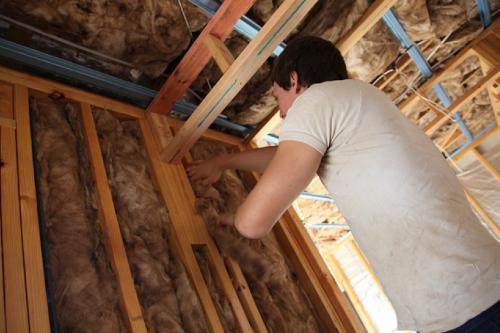Knowing The Most Eco-Friendly Types Of Insulation

There’s no doubt that every insulating product out there will have the same objective to fulfil – to reduce the overall loss of heat during the winter season and gain of heat during the summer season. Such a process tends to have a positive impact on your home by making it more efficient, thereby allowing you to save money on your monthly energy bills, while also decreasing your carbon footprint.
Hence, if you’re in the market looking to purchase the most eco-friendly type of insulation out there, then the following set of options might be able to satisfy you.
A List Of The Most Eco-Friendly Insulation Types
1. Cellulose
According to well-known insulation installers in Wellington, cellulose material is considered to be one of the most eco-friendly insulation materials out there. This is because cellulose is made from 80-85 percent of recycled newsprint. The remaining 15-20 per cent is substituted by boric acid, borax and ammonium sulphate so that the newsprint fibres can be made much more fire-resistant. Cellulose insulation can also help in repelling pests/insects, while also remaining safe for human use.
In case you’re unaware then you must learn that cellulose insulation is much more eco-friendly compared to other types of materials. The R-value (unit of insulation) is rated to be at 3.5 per inch, which is quite similar to fibreglass. However, the good thing about cellulose compared to fibreglass is that – cellulose contains more recycled materials.
It should be noted that cellulose is generally found as a loose-fill product that will need a specialised machine for blowing the same into the required areas. Cellulose insulation can be installed on open attics, existing walls and more such areas. If you have small holes or cracks on the walls or ceilings, then cellulose can be blown through such openings without having to tear the whole wall or ceiling apart for insulation installation.
2. Spray Foam
Another eco-friendly insulation material that’s also high in terms of insulation rating is spray foam. Spray foam provides an R-value of 6.5 per inch, which means that you don’t need to use much spray foam to achieve your desired insulation.
You can also find polyurethane spray foam manufactured from vegetable oil or soy instead of petroleum, making the material more environmentally sustainable.
3. Glasswool Insulation (Otherwise Known As Fibreglass)
Fibreglass is a very cost-effective insulation material that’s made from sand, recycled glass bottles as well as other material types. Fibreglass is highly fire-retardant, which makes it a great fit for places which has a fire risk. On the downsides though, fibreglass can lead to itchiness on human contact, which is why protective gear must be worn during installation.
In case you desire to learn more about insulating materials, make sure to connect with us.
Post Your Ad Here
Comments